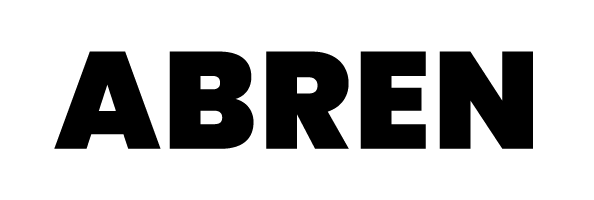|
Getting your Trinity Audio player ready...
|
Impeding the reformist agenda has taken a toll
The Pretoria Peace agreement is an important milestone towards lasting peace in Ethiopia. It paves the way for much needed national dialogue and reconciliation. Having ended the hot war, the Government of Ethiopia (GoE) began the more difficult job of winning the peace and rebuilding. However, this undertaking is proving to be more difficult, in a nation with entrenched challenges and recent systemic shocks.
In January of this year, the Government of Ethiopia (GoE) began a campaign to clean up corruption, made worse by a messy transition, two years of war, and the pandemic. These efforts spooked entrenched interests within the ruling party who felt threatened. Areas most affected by corruption ,including urban land and housing administration, where land rights are outright stolen and transferred for payment or for political favor have resisted investigation by federal authorities.
Residents of Addis Ababa decry the network of patronage within city government. Corruption in the city outdates the current regime, but most agree it got worse, not better. Scramble for the city’s land resources is palpable and one of the most glaring examples of corruption in the country, but it extends well beyond. More recently, several ministers, including the Minister of Mining and Petroleum, were forced to resign for what many suspect to be corrupt practices. The government refrained from publicly accusing the ministers. Other cabinet positions were re-shuffled, in keeping with Ethiopia’s ever more tense ethnic balance of power.
Stumbling attempts to purge corruption exposed the weak underbelly of a system undergirded by ethnic elites in regular collusion as well as competition. Having survived the onslaught of an armed insurrection by the Tigray People’s Liberation Front (TPLF), the reform now faces its most difficult challenge from within his own Prosperity Party(PP), an uneasy coalition of ethnic parties Prime Minister Abiy Ahmed tried to mold into a formidable unit. The aim of morphing the party into a more united organization was met with resistance early on, particularly among some key leaders of the Oromo Regional Administration (ORA), who feel their turn to usurp power is now. This sense of entitlement is partly driven by perceived past disenfranchisement of the Oromo, given their relative size.
These tensions are cause for anxiety among the Amhara, who increasingly feel alienated, and threatened. Continued bouts of violence in Oromia have resulted in the deaths and displacement of Amhara civilians, thousands of whom have fled to the Amhara region as IDPs, adding an extra financial burden to an already stretched region, sections of which recently suffered damage due to invasion by the TPLF rebels. In a recent official statement, the Amhara Regional Administration (ARA) made reference to “existence of a harmful, and mistaken political narrative that continues to accuse the Amhara people for past oppressive regimes”. According to officials, this narrative is cause for ethnically targeted violence against the Amhara today.
Moreover, the northwestern contested districts of Humera and Welkait have not been allocated budget support by the federal government. The area is currently led by the ARA, with meager financial support. TPLF reneging on a key clause of the Pretoria peace agreement, namely the Disarmament, Demobilization and Reintegration (DDR) adds to the mistrust. While rebuilding in war torn areas continues to slowly inch forward in both Tigray and Amhara, tensions remain high. The possibility of another spark that triggers a shooting war cannot be ruled out.
Ethiopia’s ruling party is not new to factionalism. In 2018 the predecessor to the PP, the Ethiopian People’s Revolutionary Democratic Front (EPRDF) succumbed to internal power struggles accelerated by popular unrest, a history with which the Prime Minister and his officials are keenly familiar with. Many Ethiopians still hope these tensions are resolved amicably within the party, as anything less than that would mostly likely mean more bloodshed. It behooves the GoE to double down on work being done to build a shock absorbent institutional capacity to manage and resolve conflicts, which will inevitably arise.
In February, divisions within the Ethiopian Orthodox Church Synod quickly became political and boiled over onto the public sphere, causing several clashes that resulted in dozens killed and several hundreds arrested. Parishioners of the church were incensed by the government’s response not to immediately denounce the breakaway synod, which they rightly viewed as breaking with thousands of years of church cannon. The matter exploded onto street demonstrations when evidence emerged certain members of the political class within ORA were providing support for the breakaway synod, by granting them access to church facilities they were legally not entitled to. Having sensed the political fallout, the Prime Minister quickly reversed course, and admonished the breakaway synod on television. This did not instill public confidence. On the contrary it was viewed as political expediency.

Political rivals of the sitting government have shown their willingness to take advantage of civil unrest or any other institutional instability, like that of the synod. In an environment where identity politics has reached its maximum, any wedge issue could easily become a source of public protest. Managing it is a bit like walking a tightrope. Institutions to help ease these tensions are still weak, and of little help. In particular the legal system has shown itself to be inept, requiring other means of conflict resolution outside the courts. This of course means accountability is lax. There is a general sense among the public that justice is too little, too late.
A decade ago Ethiopia was essentially a security state where the slightest deviation warranted the harshest penalty. Such tactics were fraught with gross human rights violations, but people generally felt secure from criminal gangs or armed insurgents. It is also a fact that the state bureaucracy functioned more efficiently. This was not because the pay was higher or because bureaucrats were happier. It was mainly because serious consequence followed if directives from the top were not implemented by lower officials. As a result, the state’s ability to deliver security and services was more effective.
Following the reforms led by Prime Minister Abiy, we seem to have swung in the other extreme. The federal government is less feared and regional elites more defiant. Popular social media activists regularly threaten violence against groups or individuals they dislike. Interest groups, which are usually ethnic, regularly preach hate and incite violence. and are rarely held accountable. Ruling Party discipline has waned, and with that so has the efficiency of the state itself.
In a country with weak institutions, such a laissez-faire approach presents tremendous disadvantages for maintaining order. Reforming a complex country and large country like Ethiopia requires a lot of patience and tact, and is fraught with setbacks, but recent trends seem to be counter reform. Some argue, until institutions mature, this is a necessary evil of democratization and opening up.
But leniency on the part of the state is coming at a heavy cost to safety, especially in an environment where key pillars, such as the judicial branch are failing. Public frustration is growing because people feel less protected and exposed to harm. They are now less likely to view the government as a guarantor of their safety. One notices a sort of rule-less anomie.
Then there is an economy battered with several shocks. Recent global rise in prices were compounded and made worse in Ethiopia due to conflict. A shortfall in available hard currency meant essential imports such as energy, pharmaceuticals have doubled or tripled in price. Reports indicate, the country’s dollar reserves are only enough to cover a few months of key imports. To ameliorate the exchange rate position, GoE removed long standing subsidies for fuel, removed export barriers and discouraged non-essential imports. Support from international partners in debt restructuring would greatly help cash strapped Ethiopia, but political preconditions are slowing progress.
Recent visit to Ethiopia by U.S secretary of state, Anthony Blinken could help ease Ethiopia’s debt repayment, but comes with preconditions. The United States may want parliament to remove the TPLF from the terrorist entities list before facilitating IMF loans. It also seems keen on dangling AGOA re-instatement on transitional justice for victims of war. With many unresolved sticking points abound, the process will take time and likely delay AGOA. For one, investigations on human rights violations led by the UNHCR are unlikely to be accepted by Ethiopian authorities who have pushed back against such a mandate on grounds of judicial sovereignty. Most African states support this position.
Despite these challenges, Ethiopia’s resilience must also be appreciated. There are not that many states around that could withstand similar consecutive shocks and survive. This is testament to Ethiopia’s ancient homegrown state building tradition. Despite serious disadvantages presented, Ethiopia continues to show promising signs in areas such as agriculture, infrastructure, and education. However, big gaps remain in law enforcement, judiciary and peace building. More importantly, Ethiopia is missing a clear roadmap and the kind of leadership above political expediency displayed by Prime Minister Abiy in his heyday.











You must be logged in to post a comment.